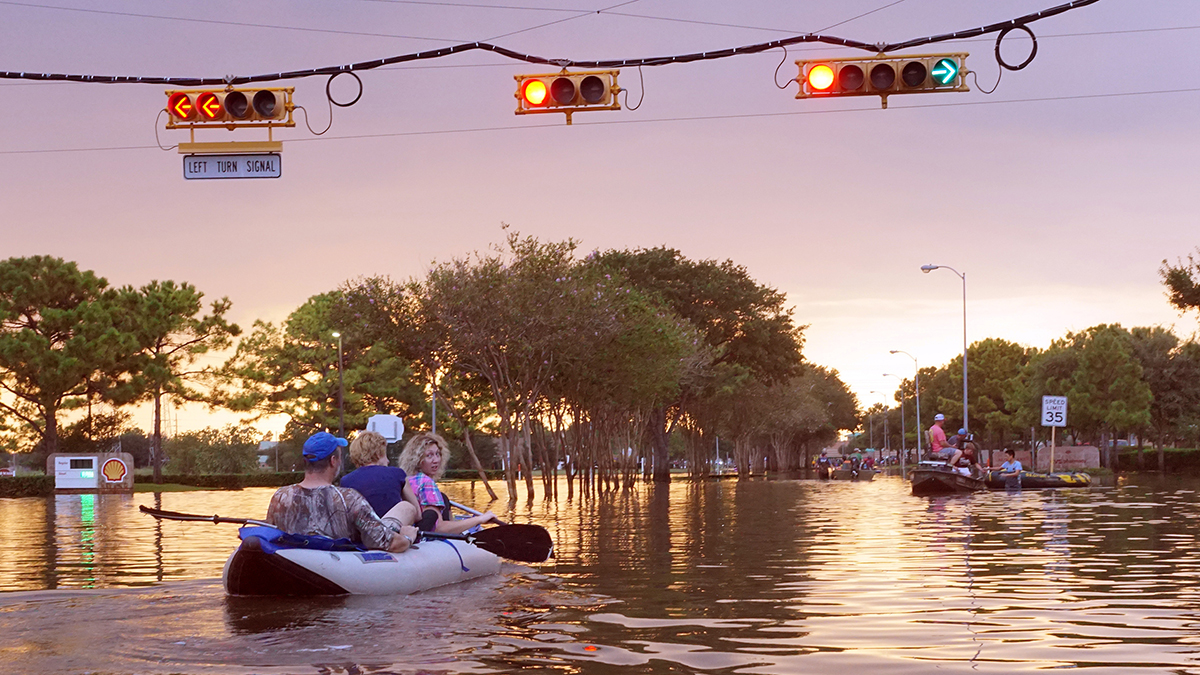By Rebeca Grynspan, UNCTAD Secretary-General
Extreme weather events like flooding and fires and becoming more common amid the climate emergency. © Irina K
The jury is still out on whether world leaders are ready to turn words into actions at COP26. At stake is life as we’ve known it for millennia.
The recent IPCC report is unequivocal. Many of the climatic changes we are seeing around us are irreversible. We can still avert the worst-case scenarios with ambitious and dedicated decarbonization measures, but more extreme weather events and persistent environmental stress are now inevitable.
The bad news is that no country is really prepared. The pandemic could have been met with a coordinated global response, to preserve lives and livelihoods, but instead revealed the frailty of global governance. As a consequence, health systems are again under stress in several countries and economic recovery is pushing parts of the world further behind, threatening to preserve and intensify the deep divisions in our world and undermining resilience to future shocks. Far from building back better, this type of response ushers in a new normal of recuring and reinforcing health, environmental and economic crises.
The good news is that we still have time to change. The pandemic has been a brutal learning experience, but we can use it to build a different future. In the Trade and Development Report (TDR) 2021, UNCTAD calls for more effort on climate adaptation and a transformative approach based on scaling up public investment to adapt to existing and future threats and to leverage private investment towards sustainable development, green industrial policies to diversify economies and create good jobs, and a new vision of multilateral cooperation to empower that approach.
The last 50 years have seen a surge in natural disasters that has hit all regions, but its economic impacts have been very uneven. Low-income countries have suffered losses that are three times greater, relative to the size of their economies, than high-income countries. Persistent inaction has been costly with estimated adaptation costs for developing countries rising sharply over the last decade.
Economic and climate shocks are compounding each other, locking developing countries into an eco-development trap of repeated disruption, economic precarity and debt dependency. The greater the rise in global temperatures, the greater the damage inflicted. With underfunded health care systems, weak infrastructure, undiversified economies and ever-shrinking policy space, these countries are more exposed not only to large-scale environmental shocks but also a more permanent state of economic stress.
Prevailing policy prescriptions provide, at best, only partial relief and tend to a one-size-fits-all approach: strengthen resilience by improving data gathering and risk assessment and by providing temporary financial support when shocks materialize. But this approach ignores the systemic nature of climate change, the unpredictability of natural disasters, and their reinforcing vicious development cycles. Our report shows that adaptation is less a matter of risk management and more one of development planning. Risk management measures do not change the structures that leave developing countries in a state of permanent vulnerability, a more forward-looking strategy for economic transformation is needed.
Proposed market-based mechanisms and de-risking strategies may provide some temporary benefits but offer no guarantees that change will take place on the necessary scale and timeline. The safest option is, instead, a climate retrofit of the state, empowered to implement green industrial policies, to leverage private green finance through better regulations and enhanced coordination and working with public banks to support investments for development.
But it will take more than these national-level efforts to make lasting progress. At COP this year, we need to see the green shoots of a new global governance regime that is ready to move beyond aspirational speeches and deliver visionary leadership.
Currently, the internationally agreed target of climate finance to be provided by developed countries for developing countries is $100 billion per year by 2020, now pushed to 2023, but new estimates show we can no longer pretend it is sufficient. The first-ever UNFCCC needs assessment of developing countries to implement climate plans recently put the cost closer to a cumulative $6 trillion by 2030, while previous UNCTAD reports estimate that $2.5 trillion per year, over the next two decades, is the necessary investment target for securing Paris Agreement commitments, with one third for adaptation purposes.
Fortunately, we have options, and if there is one thing the pandemic has taught us, it’s that advanced countries face very loose financial constraints, free as they are to borrow in their own currency, at historically low-interest rates and over long periods. They can finance ambitious public investment programmes at home and abroad.
To start, G7 countries can meet the 0.7 percent Official Development Assistance target missed in 2020, providing an additional $155 billion. Redistributing Special Drawing Rights (SDRs) and planning for bigger allocations could see another liquidity boost in the hundreds of billions for developmental ambitions. Debt relief will also be necessary, particularly for climate-vulnerable countries, to guard against resources being siphoned into unsustainable debt servicing that forecloses adequate response to existing and future climate impacts. Grants and concessional financing from multilateral development banks can be scaled up for adaptation and well-regulated green bond markets can form an important part of the financing mix.
Stabilizing the climate and rebalancing the world economy is within our power: it is a matter of conviction, will and leadership. In a matter of days, we will negotiate the future our children and grandchildren will inherit. If we get it right, Glasgow will be remembered as the place where we stopped stalling and started transforming.
This opinion piece was first published in AllAfrica.com on 8 November 2021.

